Serving 279 students in grades 7-12, Portola Junior/senior High School ranks in the bottom 50% of all schools in California for overall test scores (math proficiency is bottom 50%, and reading proficiency is bottom 50%).
The percentage of students achieving proficiency in math is 20-24% (which is lower than the California state average of 33%). The percentage of students achieving proficiency in reading/language arts is 35-39% (which is lower than the California state average of 47%).
The student:teacher ratio of 15:1 is lower than the California state level of 21:1.
Minority enrollment is 43% of the student body (majority Hispanic), which is lower than the California state average of 80% (majority Hispanic).
Quick Stats (2025)
- Grades: 7-12
- Enrollment: 279 students
- Student:Teacher Ratio: 15:1
- Minority Enrollment: 43%
- Graduation Rate: 80-89% (Btm 50% in CA)
- Overall Testing Rank: Bottom 50%
- Math Proficiency: 20-24% (Btm 50%)
- Reading Proficiency: 35-39% (Btm 50%)
- Science Proficiency: 15-19% (Btm 50%)
- Source: National Center for Education Statistics (NCES), CA Dept. of Education
Top Rankings
Portola Junior/senior High School ranks among the top 20% of public schools in California for:
Category
Attribute
Student Attention
School Overview
Portola Junior/senior High School's student population of 279 students has stayed relatively flat over five school years.
The teacher population of 19 teachers has grown by 46% over five school years.
Grades Offered
Grades 7-12
Total Students
279 students

Gender %
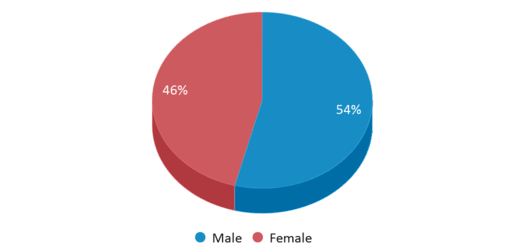
Total Classroom Teachers
19 teachers
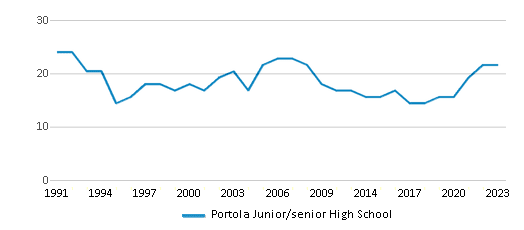
Students by Grade
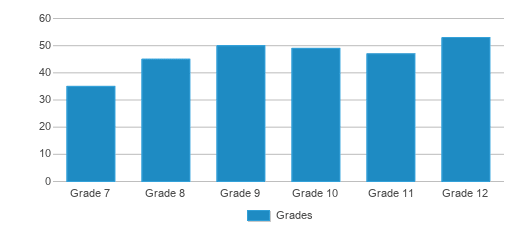
School Rankings
Portola Junior/senior High School ranks within the bottom 50% of all 9,602 schools in California (based off of combined math and reading proficiency testing data).
The diversity score of Portola Junior/senior High School is 0.56, which is less than the diversity score at state average of 0.63. The school's diversity has stayed relatively flat over five school years.
Overall Testing Rank
#5573 out of 9602 schools
(Bottom 50%)
(Bottom 50%)
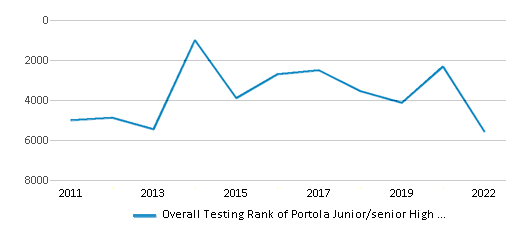
Math Test Scores (% Proficient)
20-24%
33%
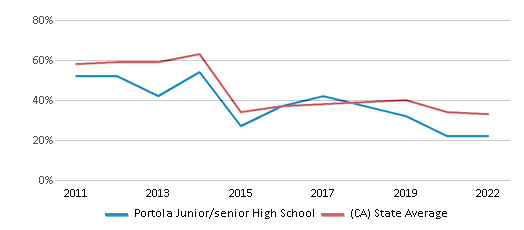
Reading/Language Arts Test Scores (% Proficient)
35-39%
47%
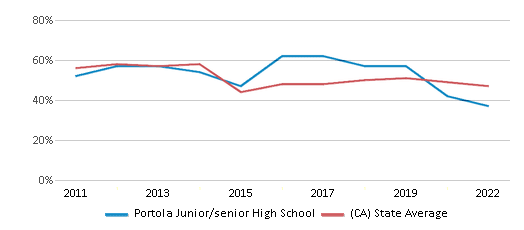
Science Test Scores (% Proficient)
15-19%
29%
Student : Teacher Ratio
15:1
21:1
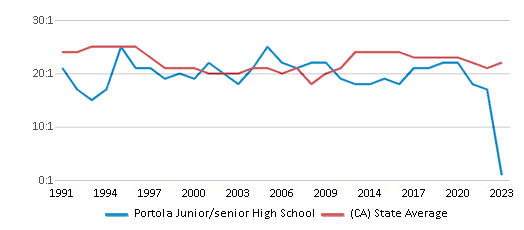
American Indian
1%
1%
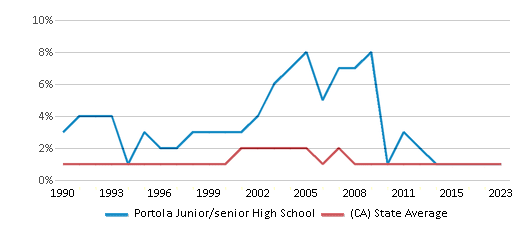
Asian
n/a
12%
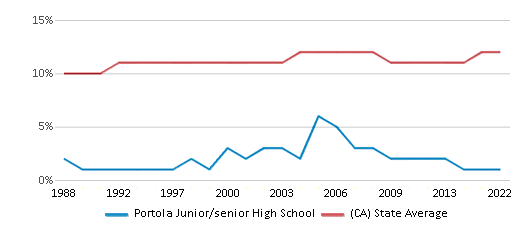
Hispanic
33%
56%
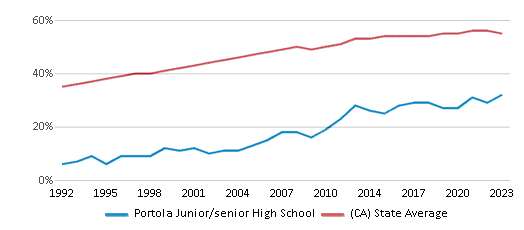
Black
n/a
5%
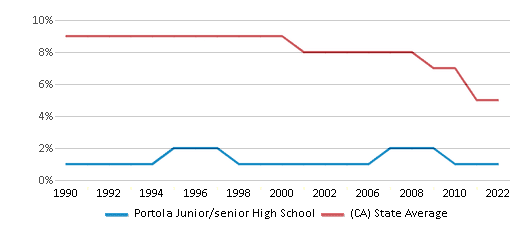
White
57%
20%
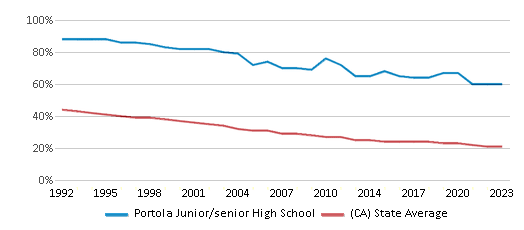
Hawaiian
n/a
n/a
Two or more races
9%
6%

All Ethnic Groups
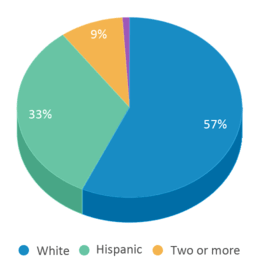
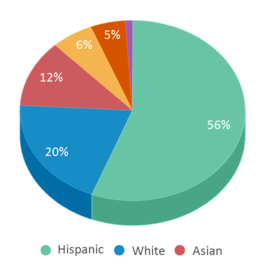
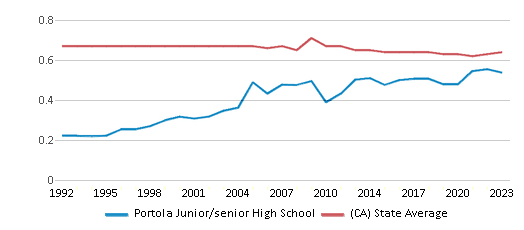
Graduation Rate
80-89%
87%
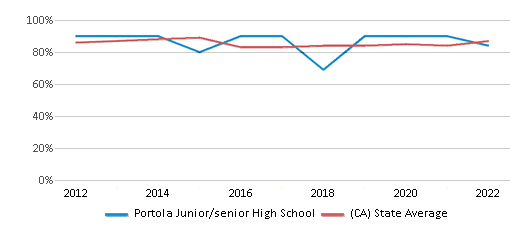
Eligible for Free Lunch
50%
54%
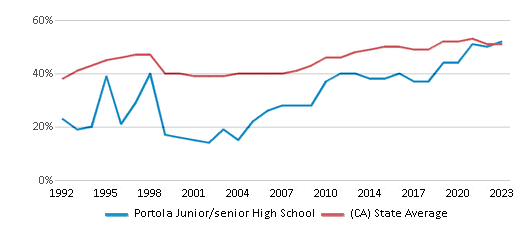
Eligible for Reduced Lunch
7%
8%
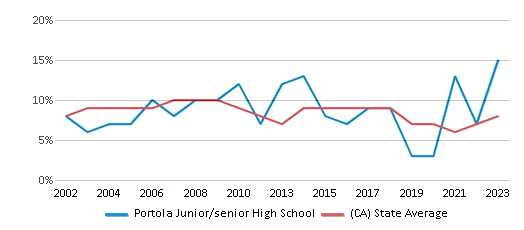
School Statewide Testing
School District Name
Source: National Center for Education Statistics (NCES), CA Dept. of Education
Profile last updated: 02/09/2025
Frequently Asked Questions
What is Portola Junior/senior High School's ranking?
Portola Junior/senior High School is ranked #5573 out of 9,602 schools, which ranks it among the bottom 50% of public schools in California.
What percent of students have achieved state testing proficiency in math and reading?
20-24% of students have achieved math proficiency (compared to the 33% CA state average), while 35-39% of students have achieved reading proficiency (compared to the 47% CA state average).
What is the graduation rate of Portola Junior/senior High School?
The graduation rate of Portola Junior/senior High School is 80-89%, which is lower than the California state average of 87%.
How many students attend Portola Junior/senior High School?
279 students attend Portola Junior/senior High School.
What is the racial composition of the student body?
57% of Portola Junior/senior High School students are White, 33% of students are Hispanic, 9% of students are Two or more races, and 1% of students are American Indian.
What is the student:teacher ratio of Portola Junior/senior High School?
Portola Junior/senior High School has a student ration of 15:1, which is lower than the California state average of 21:1.
What grades does Portola Junior/senior High School offer ?
Portola Junior/senior High School offers enrollment in grades 7-12
What school district is Portola Junior/senior High School part of?
Portola Junior/senior High School is part of Plumas Unified School District.
School Calendar
View the Portola Junior/senior High School yearly calendar below. Note key dates such as:
Event
Date
Spring Break (Events)
April 14, 2025 (Monday)
Spring Break (Events)
April 15, 2025 (Tuesday)
Spring Break (Events)
April 16, 2025 (Wednesday)
Spring Break (Events)
April 17, 2025 (Thursday)
Spring Break (Events)
April 18, 2025 (Friday)
School Reviews
5 9/6/2010
I read the previous and only review and I can't say I agree with it. My daughter went there and my son is presently in eighth grade. ( Middle school and high school share the same facility. ) Academically ..... I have met teachers who teach there and know a few personally and I believe them to be conscientious and adept. The facilities leave a bit to be desired but in order of importance I think having quality teachers far outweighs the facilities. My son seems to be thriving in the music dept. and Mr. Klivanes seems to be enthusiastic and qualified in his position. I'm glad my son attends this school and am thankful for the vast majority of the teachers he has had.
2 5/12/2008
Terrible school for sports, art, music. Academics are fair at best. The good teachers all left. Facilities are downright dangerous.
Review Portola Junior/senior High School. Reviews should be a few sentences in length. Please include any comments on:
- Quality of academic programs, teachers, and facilities
- Availability of music, art, sports and other extracurricular activities
Recent Articles

What Is A Charter School?
Explore the world of charter schools in this comprehensive guide. Learn about their history, how they operate, and the pros and cons of this educational innovation. Discover key facts about charter schools, including admission policies, demographics, and funding, as well as what to look for when considering a charter school for your child.

10 Reasons Why High School Sports Benefit Students
Discover the 10 compelling reasons why high school sports are beneficial for students. This comprehensive article explores how athletics enhance academic performance, foster personal growth, and develop crucial life skills. From improved fitness and time management to leadership development and community representation, learn why participating in high school sports can be a game-changer for students' overall success and well-being.

February 05, 2025
Understanding the U.S. Department of Education: Structure, Impact, and EvolutionWe explore how the Department of Education shapes American education, from its cabinet-level leadership to its impact on millions of students, written for general audiences seeking clarity on this vital institution.





